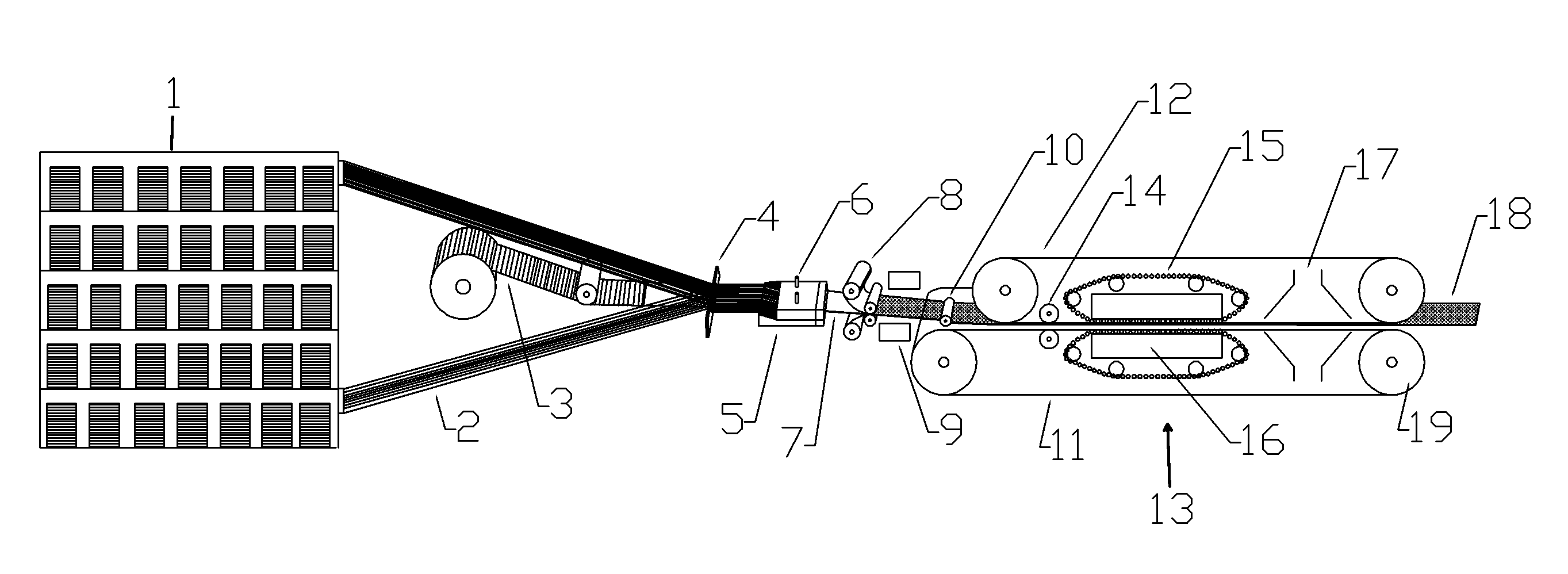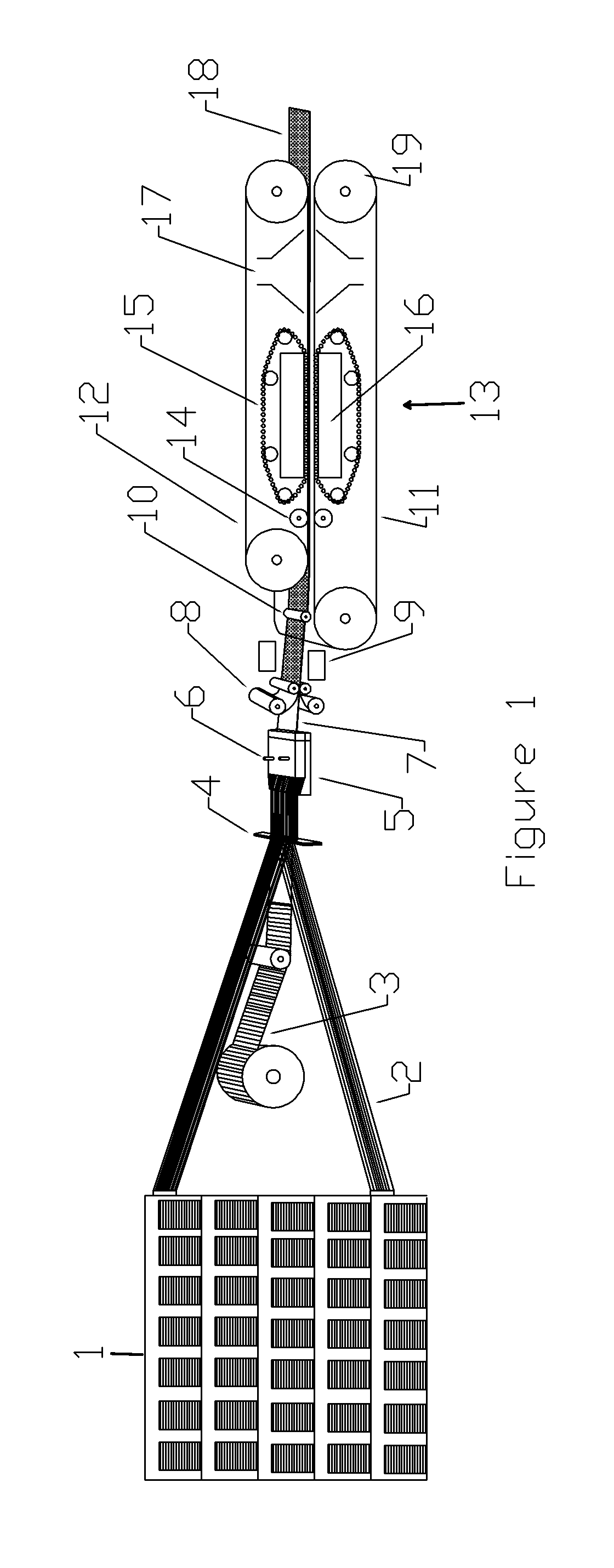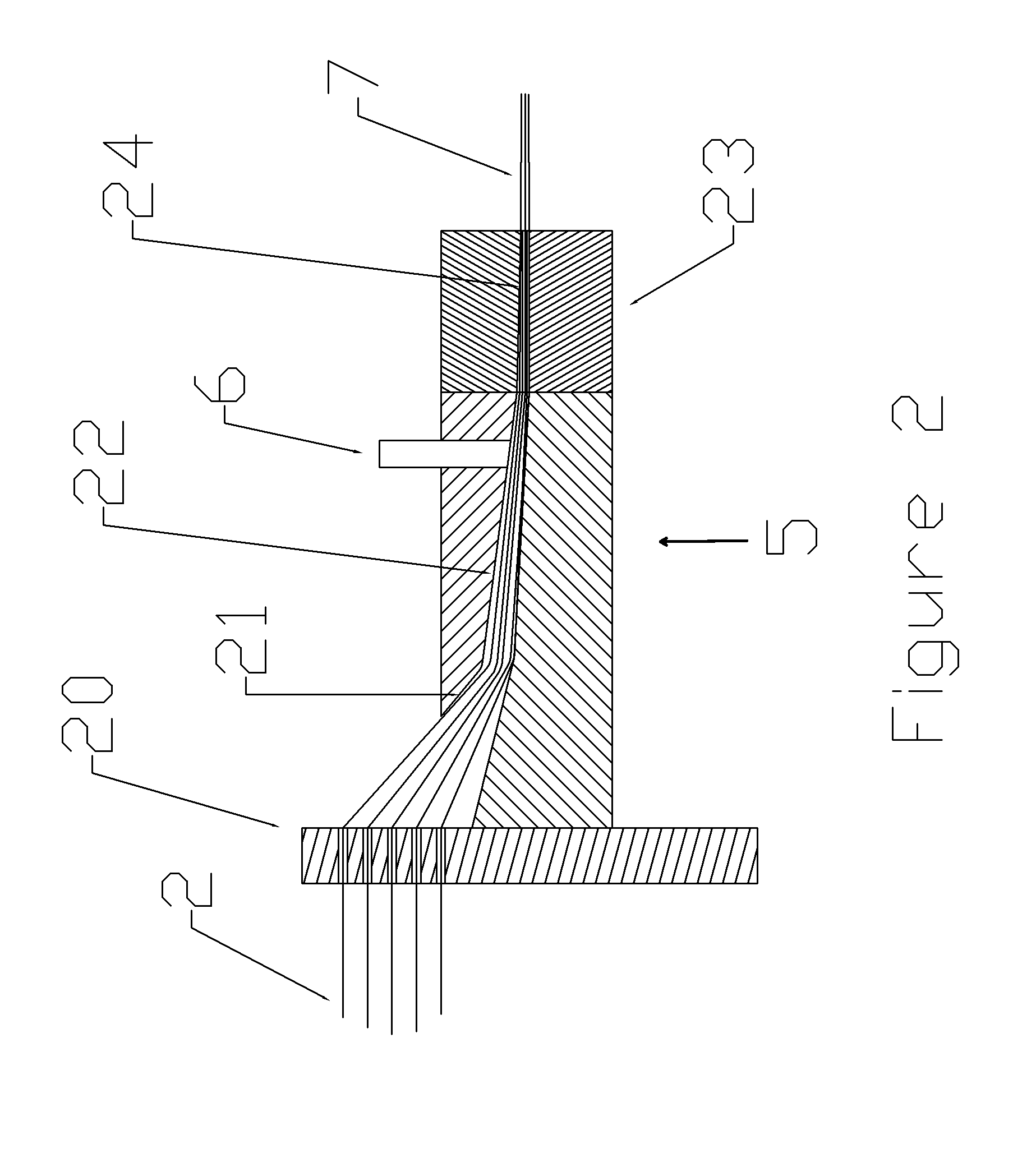Polyurethane laminates made with a double belt press
a polyurethane laminate and double belt press technology, which is applied in the field of manufacturing a thin polyurethane laminate, can solve the problems of inconvenient open system for epoxy impregnation of fibers, inability to use double belt presses in conjunction with double belt presses, and inability to achieve the effect of improving the bonding characteristics of the surface and strengthening the surfa
- Summary
- Abstract
- Description
- Claims
- Application Information
AI Technical Summary
Benefits of technology
Problems solved by technology
Method used
Image
Examples
example 1
[0042]Polyol and isocyanate were obtained from Bayer MaterialScience (Pittsburgh, Pa.). The glass rovings were purchased from Johns Manville. The rovings were 2400 Tex, which is a coarse rovings and has a lower cost. 160 roving ends were threaded through the alignment card 4 with half of the rovings above a middle slot in the card and the other half of the rovings below the slot. A uni-weft fabric made by Saertex Group (Huntersville, N.C.), was threaded through the slot. The glass fabric had a weight of 169 grams per square meter with the glass fibers oriented in the transverse direction to the machine axis. The polyurethane wetted fibers were covered by silicone coated paper having a certain residual moisture and pulled by the double belt press at a speed of 0.8 meter per minute. The slot of the die 23 was 305 millimeters (mm) wide and 1 mm in height. The roller 10 was not used. The heat zone 29 was kept at 100° C. The platens 16 in the circulating roller section of press was kept ...
example 2
[0050]The materials and process of Example 1 were similarly used with the following changes. 40 rovings of size 1200 Tex (finer than 2400 Tex) were used as a topmost layer and another 40 rovings of size 1200 Tex were used as the bottommost layer of the fiber layup. The middle core layer comprised the 160 rovings of size 2400 Tex as in Example 1. The fabric was uni-weft type with a weight of 186 grams per meter square. The release plies on top and bottom of the wet fibers were silicone coated MYLAR® film. The MYLAR® film was thought to have little or no moisture. The roller 10 was used to better consolidate the wet layup and remove entrapped air. The glass fibers were heated with hot air before feeding to the resin injection box. The average pressure was estimated to be 4 bars in circulating roller zone. The cured laminate had a thickness of about 1.4 mm. Samples of the laminate were tested and found to have the following properties.
[0051]Tensile strength (warp or longitudinal direct...
PUM
| Property | Measurement | Unit |
|---|---|---|
| weight fraction | aaaaa | aaaaa |
| weight fraction | aaaaa | aaaaa |
| thickness | aaaaa | aaaaa |
Abstract
Description
Claims
Application Information
 Login to View More
Login to View More - R&D
- Intellectual Property
- Life Sciences
- Materials
- Tech Scout
- Unparalleled Data Quality
- Higher Quality Content
- 60% Fewer Hallucinations
Browse by: Latest US Patents, China's latest patents, Technical Efficacy Thesaurus, Application Domain, Technology Topic, Popular Technical Reports.
© 2025 PatSnap. All rights reserved.Legal|Privacy policy|Modern Slavery Act Transparency Statement|Sitemap|About US| Contact US: help@patsnap.com



